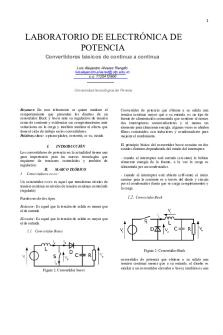# Barkhuizen v Napier 2007 (5) SA 323 (CC) PDF

| Title | # Barkhuizen v Napier 2007 (5) SA 323 (CC) |
|---|---|
| Course | Law of Contracts 211 |
| Institution | University of Pretoria |
| Pages | 2 |
| File Size | 78.7 KB |
| File Type | |
| Total Downloads | 87 |
| Total Views | 166 |
Summary
law of contracts...
Description
Barkhuizen v Napier 2007 (5) SA 323 (CC) The Big Guy. According to the textbook, the second leg of the Barkhuizen test can be interpreted in the following ways: 1. That it amounts to a resurrection of the exceptio doli generalis. This is unlikely, given that Brisley v Drotsky so unequivocally buried it. 2. That the defence of unfairness is now placed within the bounds of public policy, similar to the test for restraint of trade agreements. 3. Unfairness alone should not lead to a contract being against public policy. I recommend, though, that you read this case yourself. It’s quite rich and ambiguous and you may want to make up your own mind about it that rely on my summary.
Facts Barkhuizen entered into a contract of insurance with a broker, Napier. The insurance contract included a clause (“the time-bar clause”) that said that, in the event of the insured’s claim being repudiated, the insured only had 90 days from the date of repudiation to take the insurer to court. Barkhuizen claims, his claim is refused, and two years later tries to take Napier to court. Barkhuizen challenges the time-bar clause.
Salient legal issues The appropriate approach to applying the Constitution to contracts is to do so indirectly, with the Constitution informing the court’s interpretation of public policy. What is the applicable test to determine whether a contractual clause is against public policy? 1. Is the contractual clause objectionably unreasonable? a. Pacta sund servanda should be measured against other constitutional values. 2. Whether the clause, in light of the relative situation of the contracting parties, is unreasonable to enforce. a. This includes the equality of bargaining positions of the parties.
Reasoning In the High Court The High Court held that the time-bar clause infringed section 34 of the Constitution – the right of access to courts. The court then held that the law of general application in this case was the rule of pacta sund servanda, and that it could not be saved by section 36 limitation.
In the SCA Cameron J held that the Constitution cannot be directly applied to contracts. Rather, it should be used to inform the court’s development of public policy, which could then be used to strike down contractual provisions. This should be done with caution, however. In the Constitutional Court First, the proper approach to constitutional challenges to a contractual provision was to establish whether the provision is against public policy, as informed by constitutional values. The court then said that time limitation clauses are not contrary to public policy per se, as they reduce uncertainty, prevent cases from being tried that are stale. Whether or not an individual time limitation clause is against public policy depends on whether it affords the claimant a fair and adequate opportunity to seek judicial redress. The court then enunciated the above test for determining whether a contractual clause is against public policy. It held that the clause was not manifestly against public policy, as it would allow the insured adequate opportunity to approach a court. The clause was also not unfair in the circumstances, as there was no indication that the contract was not freely concluded. The court then emphasises the importance of good faith in contract, but that it is not a concept that stands alone and that it is enforced through other black-letter principles of constitutional law. Ultimately, the court held that the clause was not manifestly against public policy, nor were the circumstances of the parties so that it should not be enforced.
Conclusion The appeal was therefore dismissed and the contract enforced....
Similar Free PDFs

Barkhuizen v Napier 2007
- 56 Pages

Convertidor CC-CC
- 12 Pages

MIC 323 notes
- 4 Pages

MGMT 323 Syllabus S19
- 18 Pages

PNAS-2007-Tang meditation 2-5
- 5 Pages

TEMA 5 CRP, CC Y Otros Complementos
- 11 Pages
Popular Institutions
- Tinajero National High School - Annex
- Politeknik Caltex Riau
- Yokohama City University
- SGT University
- University of Al-Qadisiyah
- Divine Word College of Vigan
- Techniek College Rotterdam
- Universidade de Santiago
- Universiti Teknologi MARA Cawangan Johor Kampus Pasir Gudang
- Poltekkes Kemenkes Yogyakarta
- Baguio City National High School
- Colegio san marcos
- preparatoria uno
- Centro de Bachillerato Tecnológico Industrial y de Servicios No. 107
- Dalian Maritime University
- Quang Trung Secondary School
- Colegio Tecnológico en Informática
- Corporación Regional de Educación Superior
- Grupo CEDVA
- Dar Al Uloom University
- Centro de Estudios Preuniversitarios de la Universidad Nacional de Ingeniería
- 上智大学
- Aakash International School, Nuna Majara
- San Felipe Neri Catholic School
- Kang Chiao International School - New Taipei City
- Misamis Occidental National High School
- Institución Educativa Escuela Normal Juan Ladrilleros
- Kolehiyo ng Pantukan
- Batanes State College
- Instituto Continental
- Sekolah Menengah Kejuruan Kesehatan Kaltara (Tarakan)
- Colegio de La Inmaculada Concepcion - Cebu




![Silent Pond Investments CC v Woolworths (Pty) Ltd & another [2007 ] JOL 2008 8 (D)](https://pdfedu.com/img/crop/172x258/zwrgkw7jjk31.jpg)




